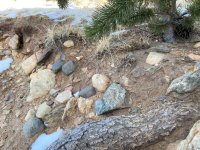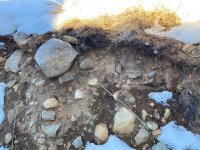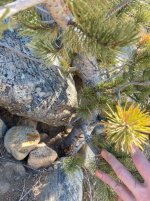2MileHighBonsai
Seedling
Hello Bonsainuts!
New member here. I have been really enjoying all of the information on these forums as I begin my bonsai journey. I have a Monterey Cypress (Cupressus macrocarpa) which I purchased from a non-bonsai nursery for $7 that I have been keeping alive in my windowsill for a couple months. I currently live above 10,000ft in Colorado and am very lucky to have many mature Bristlecone Pines on my property. My family will be moving down to the Denver area this summer and I would like to collect a young tree to bonsai and take with me. The research I have done tells me to treat these as an extremely slow growing White Pine, care wise, and to dig up the tree in early spring. I plan on building a wooden box .
I have many options to choose from, ranging in size from 12 - 60in tall and trunk sizes from 1/2 - 2+ inches. I don't know enough about bonsai yet to have any kind of vision for this tree style-wise. I am really trying to be successful at collecting a tree and keeping it healthy so that I can work with the tree when my skills are ready. I may even give myself better options/odds by taking more than one...
I am looking for advice and things to look for when selecting Yamadori from you fine folk and will be happy to keep this thread updated as the process moves along.
Here are some photos of likely suspects around the house and there even more buried in snow in the shady areas I can uncover an snap a pic of also.
Thanks for looking!
New member here. I have been really enjoying all of the information on these forums as I begin my bonsai journey. I have a Monterey Cypress (Cupressus macrocarpa) which I purchased from a non-bonsai nursery for $7 that I have been keeping alive in my windowsill for a couple months. I currently live above 10,000ft in Colorado and am very lucky to have many mature Bristlecone Pines on my property. My family will be moving down to the Denver area this summer and I would like to collect a young tree to bonsai and take with me. The research I have done tells me to treat these as an extremely slow growing White Pine, care wise, and to dig up the tree in early spring. I plan on building a wooden box .
I have many options to choose from, ranging in size from 12 - 60in tall and trunk sizes from 1/2 - 2+ inches. I don't know enough about bonsai yet to have any kind of vision for this tree style-wise. I am really trying to be successful at collecting a tree and keeping it healthy so that I can work with the tree when my skills are ready. I may even give myself better options/odds by taking more than one...
I am looking for advice and things to look for when selecting Yamadori from you fine folk and will be happy to keep this thread updated as the process moves along.
Here are some photos of likely suspects around the house and there even more buried in snow in the shady areas I can uncover an snap a pic of also.
Thanks for looking!
Attachments
-
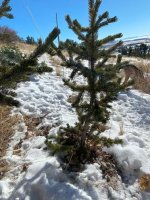 Tree #1.jpg60.5 KB · Views: 126
Tree #1.jpg60.5 KB · Views: 126 -
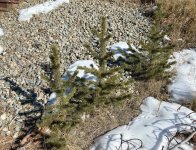 Trees #7-10.jpg755.2 KB · Views: 111
Trees #7-10.jpg755.2 KB · Views: 111 -
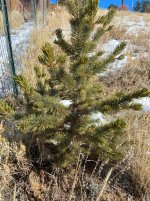 Tree #6.jpg491.7 KB · Views: 97
Tree #6.jpg491.7 KB · Views: 97 -
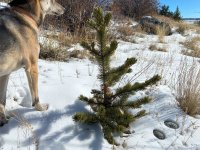 Tree #5.jpg597.1 KB · Views: 99
Tree #5.jpg597.1 KB · Views: 99 -
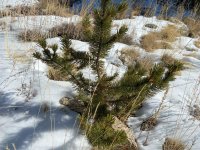 Tree #4.jpg606.1 KB · Views: 96
Tree #4.jpg606.1 KB · Views: 96 -
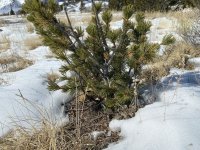 Tree #3.jpg648.6 KB · Views: 92
Tree #3.jpg648.6 KB · Views: 92 -
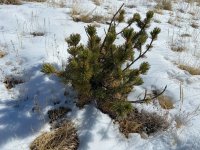 Tree #3 (3).jpg560.2 KB · Views: 91
Tree #3 (3).jpg560.2 KB · Views: 91 -
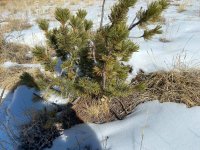 Tree #3 (2).jpg587.5 KB · Views: 85
Tree #3 (2).jpg587.5 KB · Views: 85 -
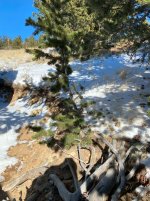 Tree #2.jpg370.3 KB · Views: 81
Tree #2.jpg370.3 KB · Views: 81 -
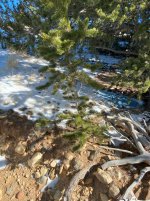 Tree #2 (2).jpg417.3 KB · Views: 107
Tree #2 (2).jpg417.3 KB · Views: 107

